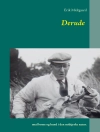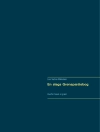This heavily illustrated text teaches parasitology from a biological perspective. It combines classical descriptive biology of parasites with modern cell and molecular biology approaches, and also addresses parasite evolution and ecology.
Parasites found in mammals, non-mammalian vertebrates, and invertebrates are systematically treated, incorporating the latest knowledge about their cell and molecular biology. In doing so, it greatly extends classical parasitology textbooks and prepares the reader for a career in basic and applied parasitology.
قائمة المحتويات
Preface XI
1 General Aspects of Parasite Biology 1
Richard Lucius and Robert Poulin
1.1 Introduction to Parasitology and Its Terminology 2
1.1.1 Parasites 2
1.1.2 Types of Interactions Between Different Species 5
1.1.2.1 Mutualistic Relationships 5
1.1.2.2 Antagonistic Relationships 6
1.1.3 Different Forms of Parasitism 10
1.1.4 Parasites and Hosts 11
1.1.5 Modes of Transmission 16
Further Reading 17
1.2 What Is Unique About Parasites? 18
1.2.1 A Very Peculiar Habitat: The Host 18
1.2.2 Specific Morphological and Physiological Adaptations 22
1.2.3 Flexible Strategies of Reproduction 27
Further Reading 29
1.3 The Impact of Parasites on Host Individuals and Host Populations 30
Further Reading 37
1.4 Parasite–Host Coevolution 38
1.4.1 Main Features of Coevolution 38
1.4.2 Role of Alleles in Coevolution 42
1.4.3 Rareness Is an Advantage 45
1.4.4 Malaria as an Example of Coevolution 46
Further Reading 50
1.5 Influence of Parasites on Mate Choice 51
Further Reading 57
1.6 Immunobiology of Parasites 58
1.6.1 Defense Mechanisms of Hosts 60
1.6.1.1 Innate Immune Responses (Innate Immunity) 60
1.6.1.2 Acquired Immune Responses (Adaptive Immunity) 62
1.6.1.3 Scenarios of Defense Reactions Against Parasites 63
1.6.1.4 Immunopathology 67
1.6.2 Immune Evasion 68
1.6.3 Parasites as Opportunistic Pathogens 72
1.6.4 Hygiene Hypothesis: Do Parasites Have a Good Side? 74
Further Reading 76
1.7 How Parasites Alter Their Hosts 77
1.7.1 Alterations of Host Cells 78
1.7.2 Intrusion into the Hormonal System of the Host 79
1.7.3 Changing the Behavior of Hosts 82
1.7.3.1 Increase in the Transmission of Parasites by Bloodsucking Vectors 83
1.7.3.2 Increase in Transmission Through the Food Chain 83
1.7.3.3 Introduction into the Food Chain 88
1.7.3.4 Changes in Habitat Preference 92
Further Reading 93
2 Biology of Parasitic Protozoa 95
Richard Lucius and Craig W. Roberts
2.1 Introduction 97
Further Reading 98
2.2 Metamonada 99
2.2.1 Giardia lamblia 99
Further Reading 102
2.3 Parabasala 102
2.3.1 Trichomonas vaginalis 103
2.3.2 Tritrichomonas foetus 106
Further Reading 106
2.4 Amoebozoa 107
2.4.1 Entamoeba histolytica 108
2.4.2 Entamoeba dispar 114
2.4.3 Other Entamoeba Species 114
2.4.4 Further Intestinal Amoebae 115
2.4.5 Acanthamoeba 115
Further Reading 116
2.5 Euglenozoa 117
2.5.1 Cell Biology and Genome 118
2.5.2 Phylogeny 121
2.5.3 Trypanosoma brucei 121
2.5.4 Trypanosoma congolense 131
2.5.5 Trypanosoma vivax 132
2.5.6 Trypanosoma evansi 133
2.5.7 Trypanosoma equiperdum 133
2.5.8 Trypanosoma cruzi 134
2.5.9 Leishmania 141
2.5.9.1 Development 142
2.5.9.2 Morphology 143
2.5.9.3 Leishmaniosis 143
2.5.9.4 Cell and Immune Biology 143
2.5.10 Leishmania tropica 148
2.5.11 Leishmania donovani 150
2.5.12 Leishmania braziliensis and Leishmania mexicana 151
Further Reading 151
2.6 Alveolata 153
2.6.1 Apicomplexa 155
2.6.1.1 Development 155
2.6.1.2 Morphology 157
2.6.1.3 Cell Biology 160
2.6.2 Coccidea 165
2.6.2.1 Cryptosporidium parvum 166
2.6.2.2 Eimeria 169
2.6.2.3 Eimeria tenella 174
2.6.2.4 Eimeria bovis 175
2.6.2.5 Isospora and Cyclospora 175
2.6.2.6 Toxoplasma gondii 176
2.6.2.7 Neospora caninum 186
2.6.2.8 Sarcocystis 187
2.6.3 Haematozoea 190
2.6.3.1 Plasmodium 190
2.6.3.2 Plasmodium vivax, a Causative Agent of Tertian Malaria 199
2.6.3.3 Plasmodium ovale, a Causative Agent of Tertian Malaria 200
2.6.3.4 Plasmodium malariae, the Causative Agent of Quartan Malaria 200
2.6.3.5 Plasmodium falciparum, the Causative Agent of Malignant Tertian Malaria or Malaria tropica 201
2.6.3.6 Plasmodium species of Monkeys, Rodents, and Birds 210
2.6.4 Piroplasms 211
2.6.4.1 Babesia 211
2.6.4.2 Theileria 214
2.6.5 Ciliophora 218
2.6.5.1 Balantidium coli 219
2.6.5.2 Ichthyophthirius multifiliis 219
2.6.5.3 Trichodina 221
Further Reading 222
3 Parasitic Worms 225
Brigitte Loos-Frank and Richard K. Grencis
3.1 Platyhelminths 228
3.1.1 Digenea 230
3.1.1.1 Development 230
3.1.1.2 Morphology 232
3.1.1.3 Adults 234
3.1.1.4 Systematics and Evolutionary History 237
3.1.1.5 Schistosoma 238
3.1.1.6 Leucochloridium paradoxum 248
3.1.1.7 Diplostomum spathaceum 248
3.1.1.8 Fasciola hepatica 251
3.1.1.9 Opisthorchis felineus 254
3.1.1.10 Paragonimus westermani 257
3.1.1.11 Dicrocoelium dendriticum 259
Further Reading 262
3.1.2 Cestoda 263
3.1.2.1 Development 265
3.1.2.2 Evolution and Origin of Life Cycles 266
3.1.2.3 Morphology 266
3.1.2.4 Genome 269
3.1.2.5 Diphyllobothriidea 269
3.1.2.6 Mesocestoides 272
3.1.2.7 Cyclophyllidea 272
3.1.2.8 Moniezia expansa 273
3.1.2.9 Hymenolepis diminuta 274
3.1.2.10 Rodentolepis nana (Hymenolepis nana) 275
3.1.2.11 Taeniidae 277
3.1.2.12 Taenia saginata 281
3.1.2.13 Taenia solium 282
3.1.2.14 Taenia asiatica 282
3.1.2.15 Hydatigera taeniaeformis 283
3.1.2.16 Echinococcus 283
3.1.2.17 Echinococcus granulosus 283
3.1.2.18 Echinococcus multilocularis 285
3.1.2.19 Echinococcus vogeli and Echinococcus oligarthrus 286
Further Reading 287
3.2 Acanthocephala 288
Further Reading 293
3.3 Nematoda 294
3.3.1 Development 295
3.3.2 Morphology 297
3.3.3 Dorylaimea 300
3.3.3.1 Trichinella spiralis 300
3.3.3.2 Trichuris trichiura 305
3.3.4 Chromadorea 306
3.3.4.1 Strongyloides stercoralis 306
3.3.4.2 Ancylostoma duodenale and Necator americanus 308
3.3.4.3 Angiostrongylus cantonensis 311
3.3.4.4 Haemonchus contortus 312
3.3.4.5 Dictyocaulus viviparus 315
3.3.4.6 Ascaris lumbricoides 315
3.3.4.7 Ascaris suum 318
3.3.4.8 Toxocara canis 318
3.3.4.9 Anisakis simplex and Anisakis spp. 320
3.3.4.10 Dracunculus medinensis 321
3.3.4.11 Enterobius vermicularis 323
3.3.4.12 Filariae 325
3.3.4.13 Wuchereria bancrofti and Brugia malayi 326
3.3.4.14 Onchocerca volvulus 330
3.3.4.15 Loa loa and Dirofilaria immitis 334
3.3.4.16 Rodent Models of Filariosis 334
Further Reading 335
4 Arthropods 337
Brigitte Loos-Frank and Richard P. Lane
4.1 Introduction 338
4.1.1 Vector Concepts 340
4.1.2 Impact of Bloodfeeding 343
Further Reading 343
4.2 Acari – Mites and Ticks 344
4.2.1 Morphology 346
4.2.2 Development 347
4.2.3 Anactinotrichida (= Parasitiformes) 347
4.2.3.1 Mesostigmata 347
4.2.3.2 Dermanyssus gallinae 348
4.2.3.3 Varroa destructor 348
4.2.3.4 Metastigmata (= Ixodida or Ixodoidea, Ticks) 350
4.2.3.5 Development 353
4.2.3.6 Tick Bites and Saliva 353
4.2.3.7 Ixodidae – Hard Ticks 354
4.2.3.8 Argasidae (Soft Ticks) 358
4.2.3.9 Tick-Borne Diseases 359
4.2.4 Actinotrichida (= Acariformes) 361
4.2.4.1 Prostigmata = Actinedida = Trombidiformes 362
4.2.4.2 Trombiculidae – Harvest Mites, Chiggers 363
4.2.4.3 Astigmata = Acaridida = Sarcoptiformes 364
Further Reading 365
4.3 Crustacea 366
4.3.1 Argulus foliaceus 367
4.3.2 Sacculina carcini 368
Further Reading 370
4.4 Insecta 370
4.4.1 Phthiraptera – Lice 374
4.4.2 “Mallophaga” – Chewing Lice 375
4.4.3 Anoplura – Sucking Lice 375
4.4.3.1 Pediculus humanus capitis 377
4.4.3.2 Pediculus humanus humanus 378
4.4.3.3 Pthirus pubis 378
4.4.3.4 Disease Transmission by Lice 379
4.4.4 Heteroptera – True Bugs 380
4.4.5 Triatominae – Kissing Bugs 380
4.4.6 Cimicidae – Bedbugs 382
4.4.6.1 Cimex lectularius 383
4.4.7 Siphonaptera – Fleas 384
4.4.7.1 Biology and Development 384
4.4.7.2 Morphology 385
4.4.7.3 Pulex irritans 387
4.4.7.4 Ctenocephalides: Cat and Dog Fleas 387
4.4.7.5 Tunga penetrans – Jiggers 388
4.4.7.6 Disease Transmission by Fleas 388
4.4.8 Diptera – Flies 390
4.4.8.1 Lower Diptera 390
4.4.8.2 Ceratopogonidae – Biting Midges, No-see-ums, Punkies 391
4.4.8.3 Disease Transmission 393
4.4.8.4 Culicidae – Mosquitoes 394
4.4.8.5 Disease Transmission 398
4.4.8.6 Simuliidae – Blackflies 401
4.4.8.7 Phlebotominae – Sandflies 404
4.4.8.8 Brachycera 408
4.4.8.9 Tabanidae – Horse Flies 408
4.4.8.10 Muscidae – House and Stable Flies 410
4.4.8.11 Calliphoridae – Blowflies, Screwworms 413
4.4.8.12 Oestridae – Bot or Warble Flies 413
4.4.8.13 Glossinidae – Tsetse Flies 415
4.4.8.14 Hippoboscidae, Nycteribiidae, Streblidae – Louse Flies, Keds and Bat Flies 418
Further Reading 419
Answers to Test Questions 423
Chapter 1 423
Chapter 2 426
Chapter 3 429
Chapter 4 431
Index 435
عن المؤلف
Richard Lucius heads the department of Molecular Parasitology at Humboldt-Universitat zu Berlin (Germany). His work concentrates on the interaction between parasites and their host`s immune system. He is bearer of the Leuckart medal of the German Society of Parasitology and of the Behring-Bilharz medal.
Brigitte Frank is emeritus Professor for Parasitology at Universitat Hohenheim (Germany). Since the 1990s, she has studied the life cycles of Dicrocoelium dendriticum and other trematodes as well as of cestodes of the genus Mesocestoides and Taenia. She has also worked on the biology of lung mites and other arthropod mammalian parasites.
Richard Lane was formerly Director of Science at the Natural History Museum, London (UK). As a medical entomologist he studied the transmission of several insect-borne diseases, especially leishmanaisis. He has also been Head of the Vector Biology Unit at the London School of Hygiene and Tropical Medicine and Head of International Health at the Wellcome Trust.
Robert Poulin is Professor of Zoology at the University of Otago (New Zealand). His research group focuses on broad questions in parasite ecology and evolution. He was awarded the Hutton Medal from the Royal Society of New Zealand and the Wardle Medal from the Canadian Society of Zoologists for his outstanding contribution to parasitology.
Craig W. Roberts is Professor of Parasitology at the University of Strathclyde, Glasgow (UK). His current research concentrates on (i) the interaction of Toxoplasma gondii and Acanthamoeba with their host and how this knowledge can be exploited for vaccines design and new antimicrobials and (ii) the influence of sex and pregnancy associated hormones on immunity.
Richard Grencis is Professor of Immunology at the University of Manchester (UK). His research has focused on immune responses to parasites, especially intestinal nematodes. He was awarded the Wright Medal from the British Society for Parasitology for his outstanding contribution to Parasitology and he serves as co-editor-in-chief of the journal Parasite Immunology.












